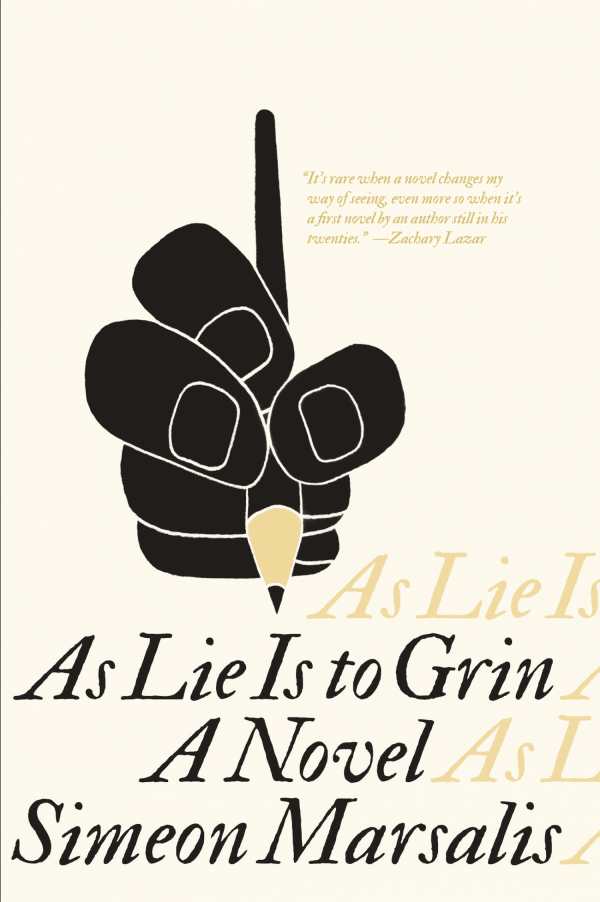As Lie is to Grin
A sophisticated and complex work, this debut reconsiders the coming-of-age story for the twenty-first century.
In his debut novel, Simeon Marsalis uses a complex structure to tell the story of David, an aspiring writer and a freshman at the University of Vermont who is trying to understand his identity against the whitewashing of his college, once famous for its Kake Walk tradition. The result is a compelling commentary on race, perception, and storytelling.
The book moves between a performative expression of David’s selfhood, the immersive experience of the novel, and the reportage of journals. Marsalis describes both cities and people as palimpsests. For cities, communities are built upon communities, each leaving some residual mark. For people, ancestors and close kin are written in and cannot be erased. Initially, the cataloging of every building feels repetitive and indiscriminate, but Marsalis’s ambitious structuring ultimately pays off.
David’s relationship with his seemingly white girlfriend Melody centers the story. Initially, he tells her that he is from Harlem and that his mother suffers from drug addiction, denying his actual upbringing. When his lie spurs a revelation, all must question their assumptions about race and identity.
Marsalis uses New York City and the University of Vermont campus as metaphors for the larger search for identity, from borrowed architectural ideals to the recurring Akan symbols hiding in the city, which leads to more troubling thefts: “the black history left no trace; Lincoln Square was a premeditated act of erasure.”
David creates his own erasure when he denies his history to perform another kind of self that he feels will please Melody and her father. He represents a version of blackness to them.
Marsalis also uses other writers, particularly Jean Toomer and his mixed-genre work Cane, as a kind of vellum onto which this novel has been written, allowing earlier literature to influence his own language and structure. Even the book’s title takes its language from Paul Laurence Dunbar, though it slightly changes and reimagines it, so that the past is again whispering with the present.
Rife with references to architecture, literature, and art, As Lie is to Grin moves between genres and disciplines. It is a novel that works on accretion—revealed family history, interconnected aspirations to write, and a desire for connection. A sophisticated and complex work, this debut reconsiders the coming-of-age story for the twenty-first century.
Reviewed by
Camille-Yvette Welsch
Disclosure: This article is not an endorsement, but a review. The publisher of this book provided free copies of the book to have their book reviewed by a professional reviewer. No fee was paid by the publisher for this review. Foreword Reviews only recommends books that we love. Foreword Magazine, Inc. is disclosing this in accordance with the Federal Trade Commission’s 16 CFR, Part 255.

